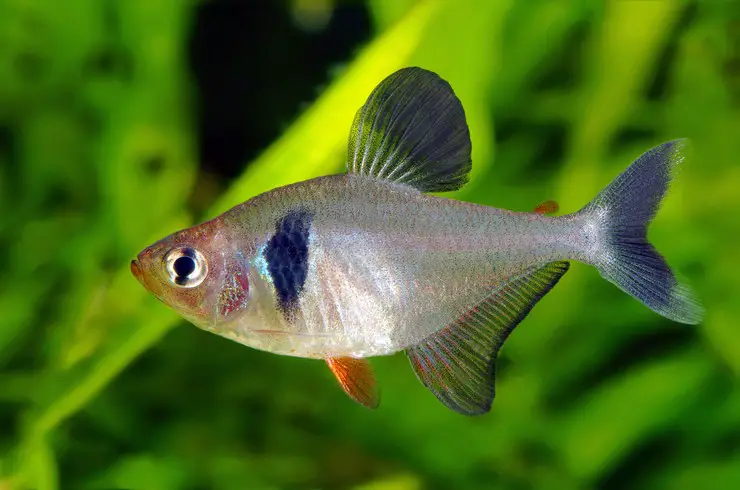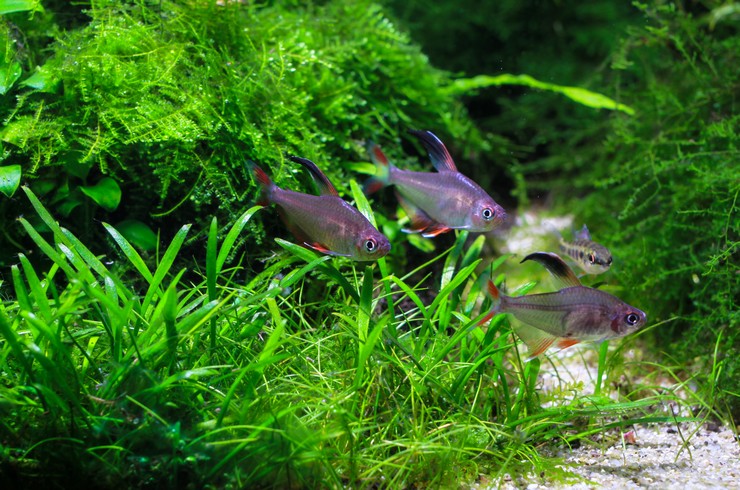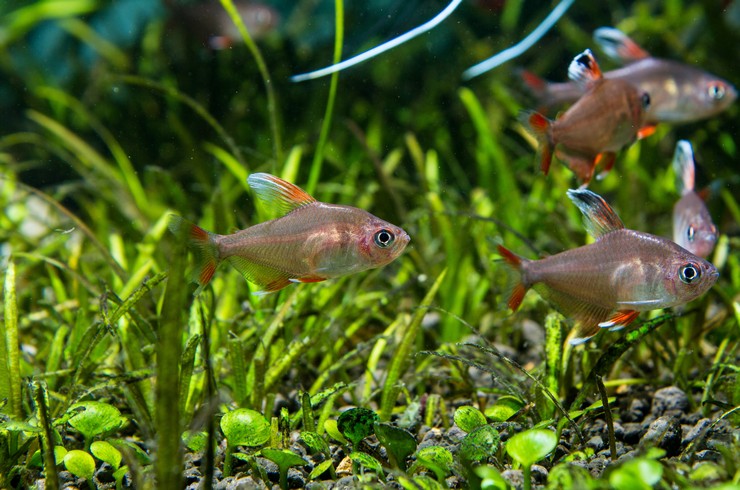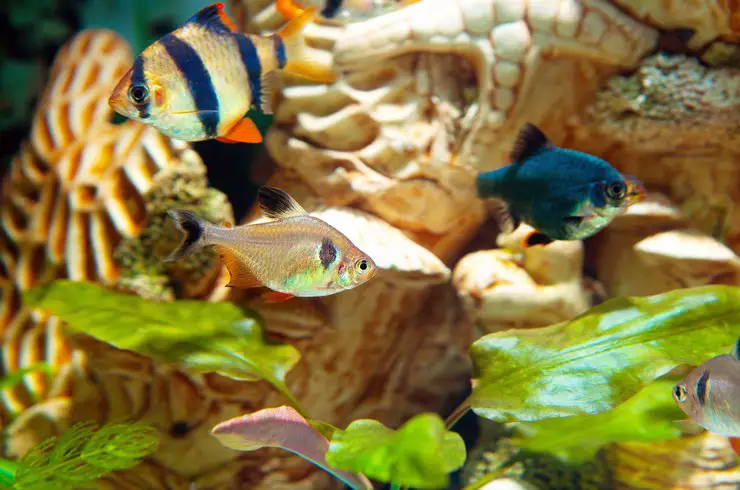Small schooling characins from South America are frequent aquarium inhabitants. These lively and agile fish will adorn any tropical aquarium with live plants. From our article, you will learn how to properly contain one of the most common representatives of the Boraginaceae – ornatus.
General information
Ornatus is a combined group of freshwater ray-finned fish from the Kharacin family. These small schooling species live in Central and South America. Popular aquarium inhabitants are valued for their beauty, as well as unpretentious maintenance and reproduction.
The second common name for ornatus is “phantom”. This name is associated with the structure of their body. It is strongly flattened from the sides, translucent (sometimes you can see the internal organs). Such a device allows the fish to effectively hide from predators, disguising themselves as the environment.
The first ornatus came to the aquarium hobbyists in the 30s of the XX century.
Appearance
All ornatus have a similar body shape. It is high, strongly flattened laterally, tapering at the tail. Sizes range from 4 to 7 cm. The body is translucent, often you can even see the insides of the fish.
The caudal fin is two-lobed and relatively high. The anal stretches from the middle of the body to the tail. The dorsal fin is high, especially in males. There is a rounded adipose fin characteristic of all characins.
The color is varied, depending on the type, it can be: red, pink, almost black, silver. Many species have dark spots behind the operculum. A faint black stripe passes through the eye.
Habitat
Ornatus are inhabitants of South America, they live mainly in the Amazon basin. They prefer calm reservoirs without a strong current, densely overgrown with plants. The water here is acidic and soft, has a brownish tint due to the high content of humic substances formed as a result of the decay of leaf litter from tropical rainforests.
Care and maintenance
In nature, ornatus live in large flocks, in some, there are up to 50 individuals. Therefore, it is also necessary to start fish at least 6 pieces, and preferably 8-10. A 60-liter aquarium is enough to keep a minimum flock. It is better to choose sandy or small pebble soil. Natural decorations – driftwood and stones are perfect. It is recommended to plant aquarium plants along the sides of the aquarium, leaving a swimming area in the center.
Ornatus plants do not like bright lighting, it is recommended to use floating plants to dim it. Filtration should be good, but no strong flow. You will also need a compressor to aerate the water and a thermostat to maintain a comfortable temperature.
Water changes up to 20% of the aquarium volume are required once a week. To create conditions as close to natural as possible, it is recommended to add natural peat extract – Tetra ToruMin to the water.
Compatibility
Ornatus is an extremely peaceful and non-conflict fish. Occasionally skirmishes can be observed within the pack, but they do not pose any danger.
Good neighbors for them can be other representatives of the characin family – neons, thorns, rhodostomuses; peaceful cichlids – apistograms, scalars; small carp: zebrafish, rasbora, micro rasbora; some labyrinths, for example, lalius, gourami; peaceful viviparous fish – platies, swordtails, mollies.
Care should be taken with cockerels and observe the interaction of fish in the aquarium, it happens that active phantoms bite their fins. With large predatory cichlids, cohabitation must be excluded.
Feeding Ornatus
In the aquarium, ornatus fish eat high-quality dry food with great pleasure. It is better to refuse live and frozen ones because they are not balanced and carry the risk of contamination of the aquarium with infections.
Fish have a small mouth, so the size of the food should be appropriate. The most suitable options for feeding phantoms are as follows:
- TetraMin is the staple food for all ornamental fish. It has a high nutritional value and easily digestible components. Supports healthy growth and vitality of fish as well as bright colors. You can choose between flakes and mini-pellets.
- To enhance and maintain the red color of some species, feed with natural color enhancers, such as TetraPro Color, must be present in the diet. The result is already seen after several weeks of daily feeding.
- Tetra Micro Crisps are mini chips designed specifically to meet the nutritional needs of small fish. The food is presented in two colors of slowly dipping chips: green – to maintain health and vitality, red – with natural carotenoids to enhance the natural color.
When keeping ornatus, overfeeding should be avoided; it can negatively affect the health of the fish and lead to an imbalance in the aquarium. The food should be eaten by the fish in a few minutes.
You can diversify the feeding of your pets with the help of tasty and nutritious treats from the Tetra FreshDelica series, for example, daphnia and bloodworms, very beloved by phantoms.
Reproduction and breeding
Ornatus is easy-breeding fish. To do this, you need a small aquarium from 20 liters with a water level of about 15 cm. A separator mesh or a large number of small-leaved plants is placed on the bottom. The water in the spawning tank should be a couple of degrees warmer, softer, and more acidic than in the main tank.
A couple of weeks before spawning, it is advisable to plant the producers and feed them abundantly.
After landing in a spawning aquarium, the ornatus begins a courtship process that lasts up to 3 days. After that, the female spawns from 100 to 400 eggs, which fall to the bottom. At the end of the process, the producers are returned to the main aquarium. Next, the spawning box should be shaded, providing for weak aeration.
Incubation lasts 36-48 hours, after which the larvae hatch, feeding on the yolk sac for another 3-4 days. Next, the fish need to be fed every 2-3 hours.
Ornatusa reaches puberty at the age of 8-10 months.
